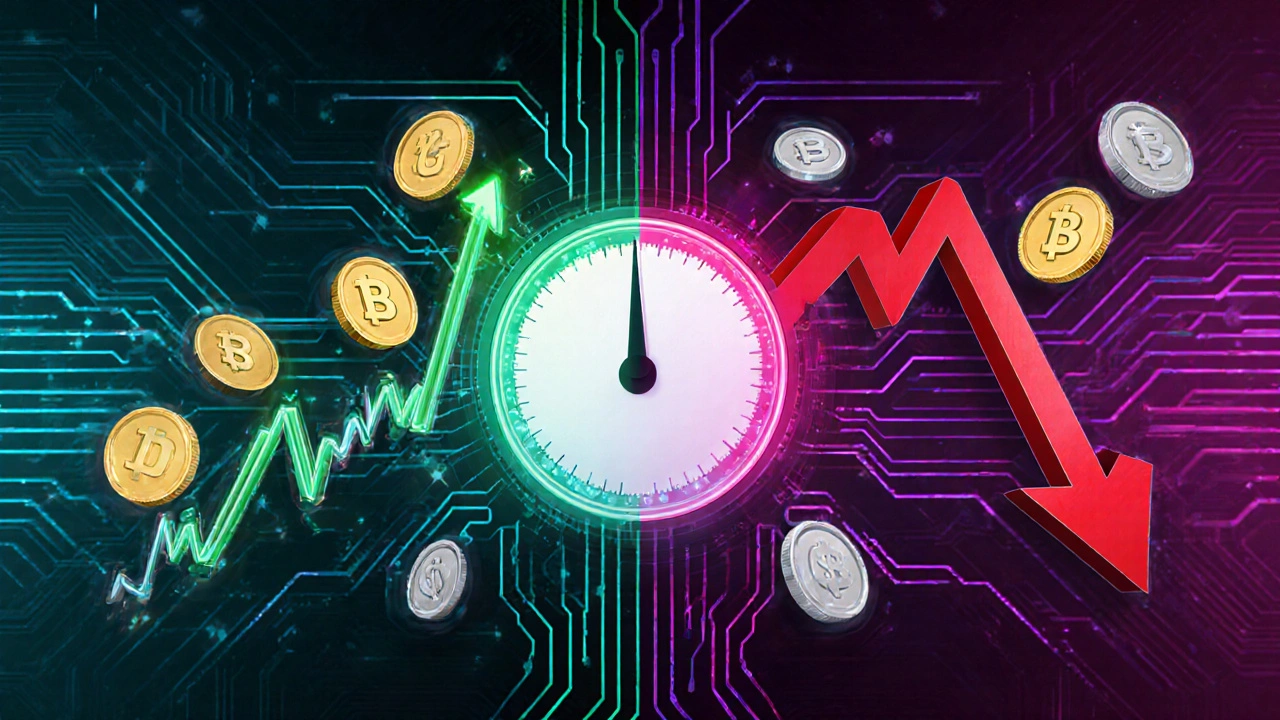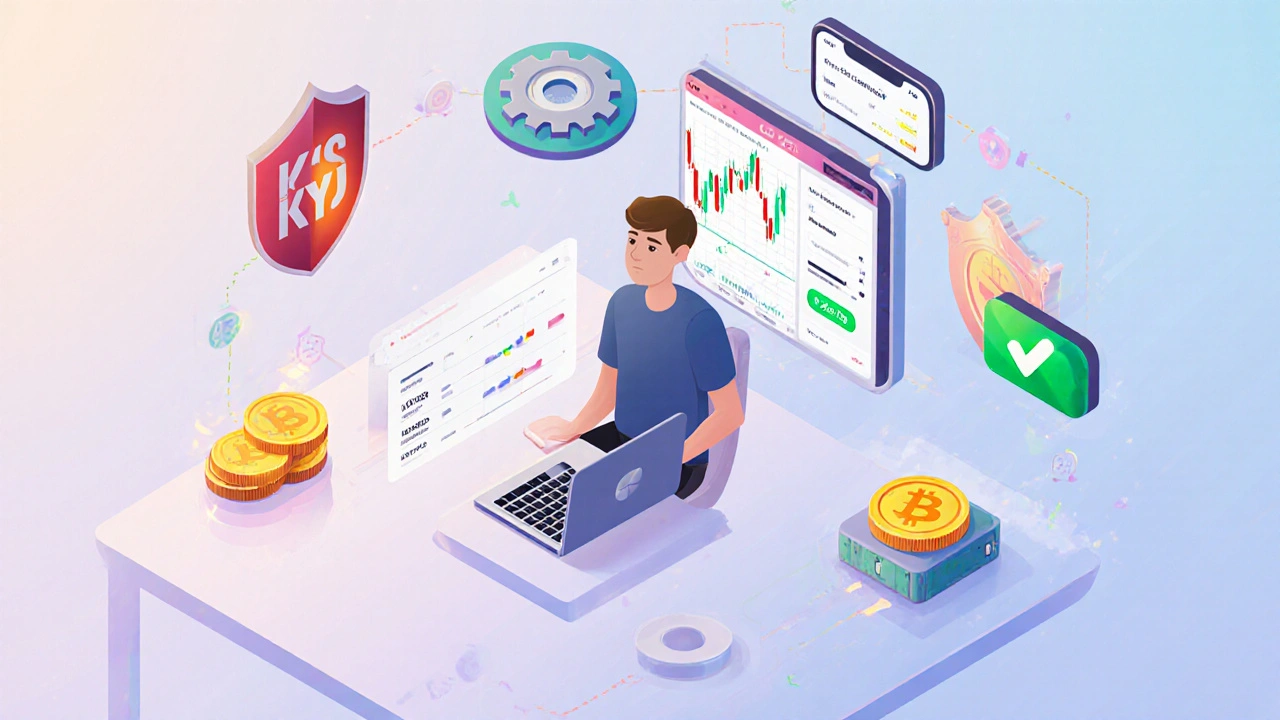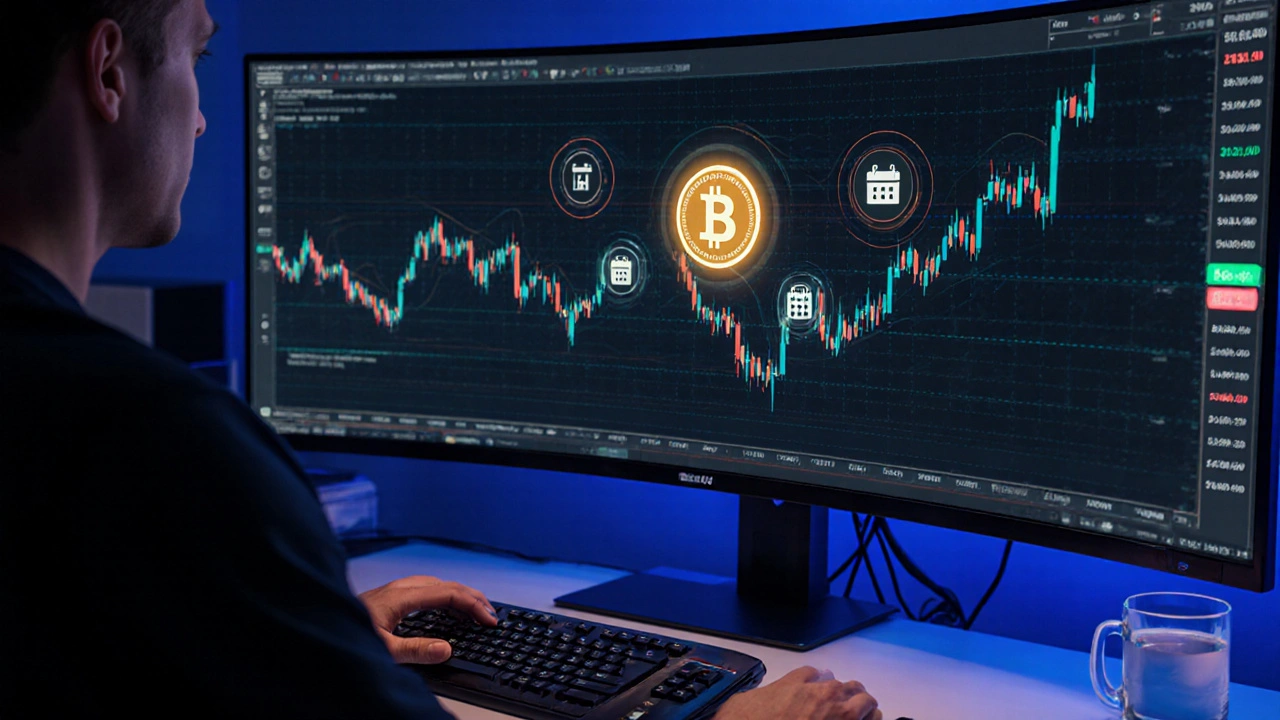Ever wondered why traders keep talking about crypto futures trading while the price of Bitcoin bounces up and down? The answer lies in the way futures let you bet on price moves without actually owning the coin. Below you’ll get the full picture - from the basics of a futures contract to the exact steps to place your first trade, plus the risks you shouldn’t ignore.
What Exactly Are Crypto Futures?
Crypto Futures is a derivative product that gives traders the right and obligation to buy or sell a specific amount of a cryptocurrency at a predetermined price on a set future date. Unlike buying Bitcoin in your wallet, you never need to move the actual coin. The contract mirrors the underlying asset’s price, so you can profit from both upward and downward moves.
How a Futures Contract Is Structured
A Futures Contract specifies the underlying cryptocurrency, contract size, expiry date, and settlement method. Most crypto exchanges list contracts that never expire - they’re called perpetual futures - but traditional dated contracts also exist.
Key parameters you’ll see on any platform:
- Underlying Cryptocurrency (e.g., BTC, ETH)
- Contract Size (e.g., 0.01 BTC per contract)
- Leverage Ratio (e.g., 10x, 50x)
- Funding Rate (periodic payment between long and short positions)
- Expiry (for dated contracts only)
Core Components: Margin, Leverage, and Funding Rate
With futures you trade on Margin the collateral you must lock up to open a leveraged position. The amount required is a fraction of the contract’s notional value - that’s what makes leverage possible.
Leverage represents how many times larger your exposure is compared to your margin. A 20x leverage on a $1,000 margin lets you control $20,000 worth of Bitcoin. While higher leverage magnifies profit potential, it also accelerates loss.
Perpetual contracts charge a Funding Rate a periodic payment that balances the price of the futures with the spot market. If the futures price is above spot, longs pay shorts; if below, shorts pay longs. The rate can be positive or negative and typically updates every 8 hours.
How Trades Are Executed: Going Long, Going Short
When you believe the price will rise, you go long. If you think it will fall, you go short. The exchange matches your order with opposing orders, just like spot trading. The difference is that the trade’s profit and loss (P&L) are calculated on the notional value, not the small amount of margin you posted.
Opening a position:
- Select the contract (e.g., BTCUSDT Perpetual).
- Choose your leverage level.
- Enter the order size - the number of contracts you want.
- Set a stop‑loss and optional take‑profit to manage risk.
- Confirm the order; the required margin is instantly deducted from your account balance.
Closing a position is as simple as placing an opposite order (sell to close a long, buy to close a short). Once closed, the P&L settles in the quote currency (usually USDT or USD).

Settlement Types: Cash vs Physical Delivery
Most crypto futures settle in cash. That means when the contract expires (or when you close a perpetual position), you receive or pay the difference between the contract price and the spot price, expressed in the quote asset.
A minority of contracts offer Physical Delivery the actual transfer of the underlying cryptocurrency at contract expiry. Physical delivery is rare on retail exchanges because it requires the trader to hold the real coin, which defeats the purpose of a derivative.
Risks and How to Manage Them
Futures trading bundles three major risk sources:
- Leverage Risk - amplified losses can wipe out your margin in seconds.
- Funding Rate Volatility - a sudden swing can turn a profitable long into a net loss.
- Market Liquidity - thin order books cause slippage, especially on smaller alt‑coin contracts.
Effective risk management looks like this:
- Never use more leverage than you can afford to lose - 5x to 10x is reasonable for beginners.
- Always set stop‑loss orders at a price that limits your loss to a predefined percentage of your account (commonly 1‑2%).
- Monitor the funding rate schedule on your exchange; avoid holding positions during high‑rate periods.
- Keep a portion of your capital in the spot wallet as a safety buffer for margin calls.
Step‑by‑Step Guide: From Sign‑Up to First Trade
Ready to try it yourself? Follow these six steps:
- Choose a reputable exchange. Major platforms like Binance Futures offers a wide range of perpetual and dated crypto futures contracts with up to 125x leverage or Kraken Futures for a more regulated environment.
- Complete KYC and enable two‑factor authentication. This reduces the chance of account hijacking.
- Deposit collateral. Transfer USDT, USD, or your preferred stablecoin to the futures wallet.
- Configure your leverage and risk settings. Set default leverage (e.g., 10x) and enable auto‑margin mode if you want the platform to move funds from your spot wallet when needed.
- Place a test order. Use the exchange’s “demo” or “paper trading” mode to familiarize yourself with the UI without risking real capital.
- Execute the real trade. Follow the order steps described earlier, watch the P&L bar, and adjust stop‑losses as the market moves.
After your first trade, review the trade‑log, note what worked, and refine your strategy. Consistency beats “big‑win” chasing every time.

Quick Checklist - All the Things You Need Before Trading
- Account on a regulated or reputable crypto futures exchange
- Completed KYC and 2FA enabled
- Collateral deposited in a stablecoin (USDT, USDC, or fiat)
- Understanding of contract size, leverage, and funding rate
- Pre‑set stop‑loss and take‑profit levels
- Risk budget (e.g., max 2% of account per trade)
Comparison: Crypto Futures vs Spot Trading
| Feature | Crypto Futures | Spot Trading |
|---|---|---|
| Ownership of Coin | No - you hold a derivative contract | Yes - you own the actual cryptocurrency |
| Leverage Available | Typically 5x‑125x (depends on exchange) | Usually 1x (no built‑in leverage) |
| Profit on Downside | Possible by shorting | Only possible by selling owned coins |
| Funding/Financing Cost | Funding rate paid/received every 8hours | None |
| Risk of Liquidation | High - margin can be wiped if price moves against you | Low - you only lose the amount you invested |
| Typical Users | Speculators, hedgers, professional traders | Long‑term investors, casual traders |
Bottom Line
Crypto futures give you a powerful way to amplify bets on price movements, but that power comes with a higher risk profile. Master the basics - contract specs, margin, leverage, and funding - before you turn on the risk dial. Use stop‑losses, keep leverage modest, and always trade with money you can afford to lose. Follow the step‑by‑step guide, tick the checklist, and you’ll be ready to navigate the futures market with confidence.
Frequently Asked Questions
What is the difference between perpetual and dated crypto futures?
Perpetual contracts have no expiry date and use a funding rate to stay close to the spot price. Dated contracts expire on a set date, at which point settlement occurs either in cash or through physical delivery.
How does the funding rate affect my profit?
If you hold a long position during a positive funding period, you’ll pay the short side, reducing net profit. Conversely, a negative rate pays you. Monitoring the funding schedule helps avoid unexpected costs.
Can I lose more than my initial margin?
Yes. High leverage can trigger a liquidation that wipes out your margin and may incur additional fees. That’s why many traders cap leverage at 5‑10x and always set stop‑losses.
Do I need a special wallet for futures?
No. Futures are held in the exchange’s margin wallet. You only need a regular crypto wallet for spot holdings or to fund your margin account.
Is crypto futures trading legal in New Zealand?
The Financial Markets Authority treats crypto derivatives as regulated products. You must use a licensed exchange or a platform that complies with AML/KYC rules. Always verify the provider’s regulatory status before depositing funds.


